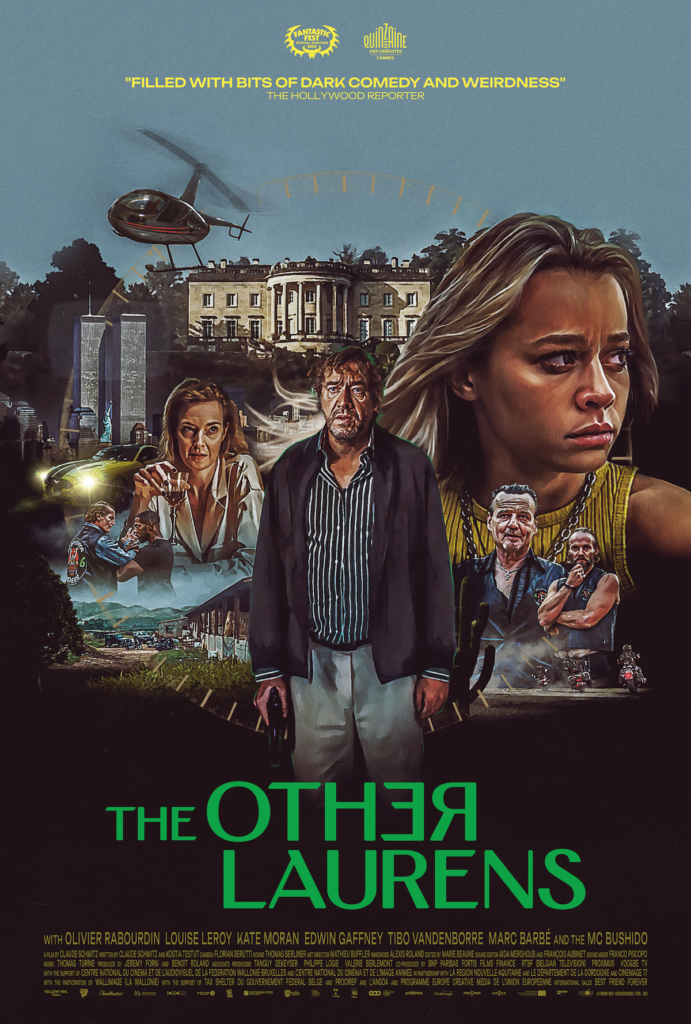‘A Formal Schizophrenia’ Defines, and Detracts From, a New Thriller, ‘The Other Laurens’
As much as director Claude Schmitz esteems Ingmar Bergman and Akira Kurosawa, he was also weaned on ‘a whole corpus of Reagan films that conveyed simplistic and caricatured narrative schemes.’

Claude Schmitz’s new thriller, “The Other Laurens,” is cloistered in tone and adamant about it. Nothing is right in this threnody about the bonds of family. Forget the story that unfolds in a little under two hours: Take into account the overriding air of exhaustion and muffled sense of balance. Thomas Turine’s soundtrack iterates as much, beginning, as it does, with a flourish worthy of a spookhouse organ. Mr. Turine’s subsequent contributions don’t backtrack on this kitschy inflection.
Cinematographer Florian Berutti imbues the film with cool, saturated tonalities redolent of mid-20th century technicolor: Think John M. Stahl’s “Leave Her to Heaven” (1945) or Alfred Hitchcock’s “Vertigo” (1958). The script co-written by Mr. Schmitz and Kostia Testu is, in its basic configuration, a film noir. The story is anchored by an anti-hero, powered by a femme fatale, enlivened by hardened cops, and centered on a murder whose circumstances are less than crystalline.
Mr. Schmitz admits to the movie having “a formal schizophrenia.” Like a lot of us, his tastes veer between higher forms of expression and popcorn-and-a-soda sensationalism. As much as our auteur esteems Ingmar Bergman and Akira Kurosawa, Mr. Schmitz was also weaned on “a whole corpus of Reagan films that conveyed simplistic and caricatured narrative schemes.” May I be so impertinent to suggest that “The Other Laurens” is more redolent of a genre we’ll have to call Nixon films: 1970s exploitation pictures made for a double bill at the local drive-in.
The poster is a giveaway, with its montage of the film’s characters and locales. The encyclopedic illustration bears a resemblance to similar artworks made for “The Poseidon Adventure” (1972) and “Foxy Brown” (1974). Although Mr. Schmitz was all of a year old when the ’70s came to end, he absorbed that decade’s ramshackle ennui and counter-cultural fixations. The example of Quentin Tarantino is here to glean, though Mr. Schmitz has made a more felt pastiche of the grindhouse aesthetic than Mr. Tarantino did with “Death Proof” (2007).

“The Other Laurens” begins with a midnight drug deal. A svelte young woman haggles over its finer points with a bunch of toughs. This is Shelby (Kate Moran), the avaricious American wife of a wealthy Belgian financier who recently came to a fiery end in an automobile accident. Drunk driving is the official explanation, but the deceased’s daughter, Jade (doe-eyed Louise Leroy), isn’t convinced. She travels to Brussels to confer with her uncle, Gabriel Laurens (Olivier Rabourdin). A rumpled private investigator, Gabriel is in no mood for a mystery. He’s not in the mood for anything.
We initially meet Gabriel at his mother’s sickbed. She mistakes him for François, and who wouldn’t? François was Gabriel’s identical twin, and someone Gabriel fell out with years ago. When Jade shows up at his door in the wee hours, he’s grudgingly swayed into her orbit. Gabriel begins to share the doubts Jade harbors about the death of her father.
Gabriel shepherds his niece back to the sprawling family estate at Perpignan, a city in southern France that abuts the Spanish border. “The Other Laurens” is a polyglot picture in which English, French, and Spanish are spoken liberally and, it seems, without need of a translator for its principals. Convenient, that.
Shelby isn’t happy about the return of her step-daughter — Jade being the progeny of François’s first wife — nor does the sight of Gabriel fill her with joy. No one in the picture is happy with anyone else, which is a source of the picture’s tensions and comedy. How serious a noir is “The Other Laurens?” Not much: The pace is slack, the tangents surrounding our main players arbitrary, and the puzzling nature of the narrative is pat.
Perhaps that’s Mr. Schmitz’s point. If his movie reflects, as I’ve been told, his Belgian sense of humor, then some of us in the world community prefer our ironies a bit less arch. As it is, the chief virtue of “The Other Laurens” is the rapport that accrues between Gabriel and Jade. Hats off to Monsieur Rabourdin and Mlle. Leroy for bringing gravity to a propulsively frivolous entertainment.

